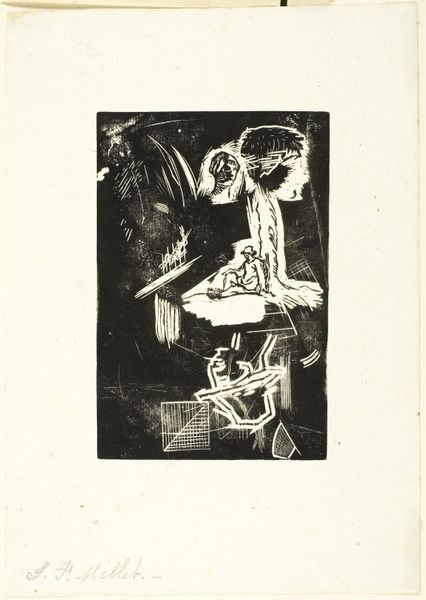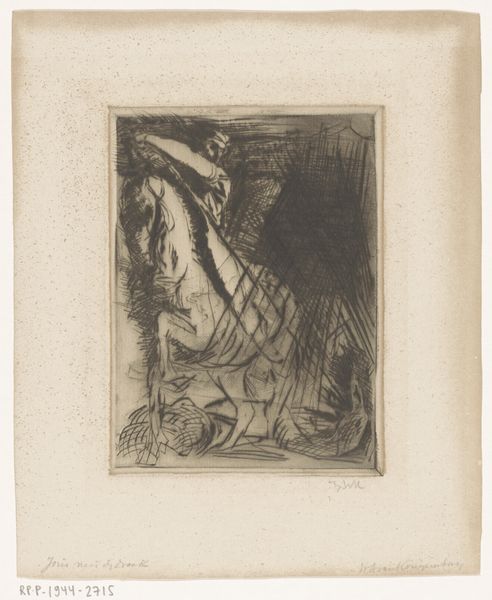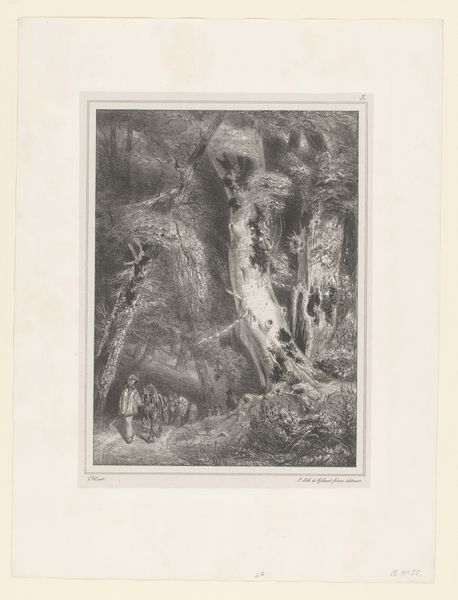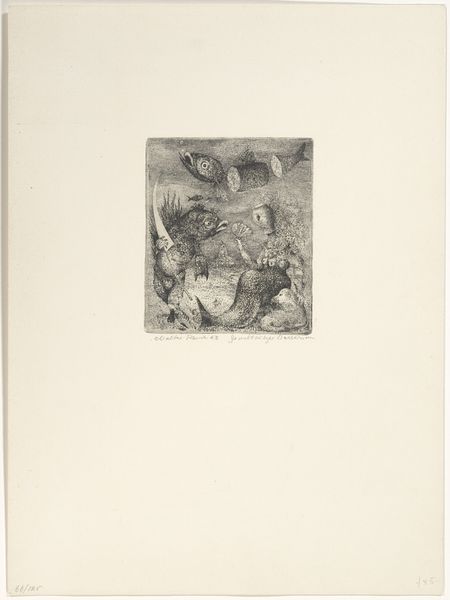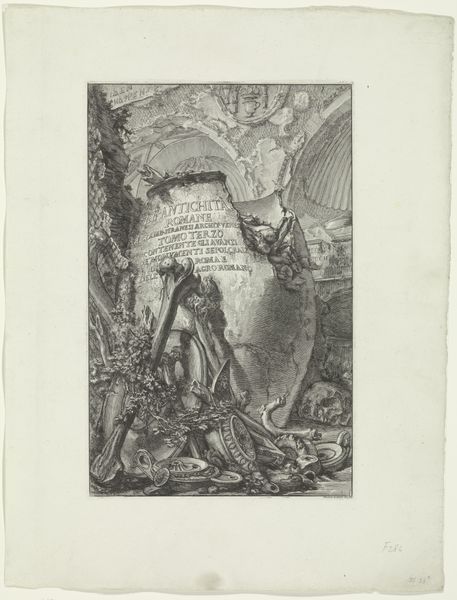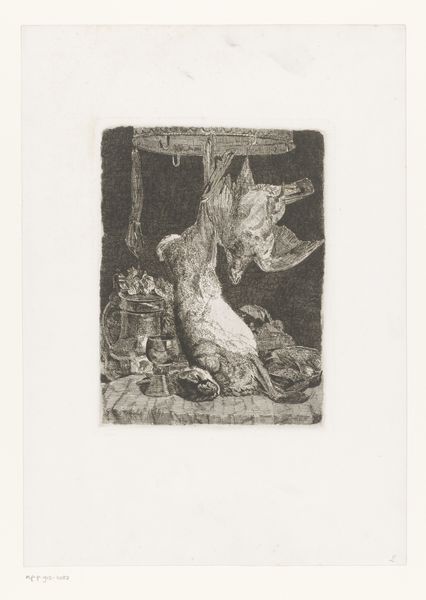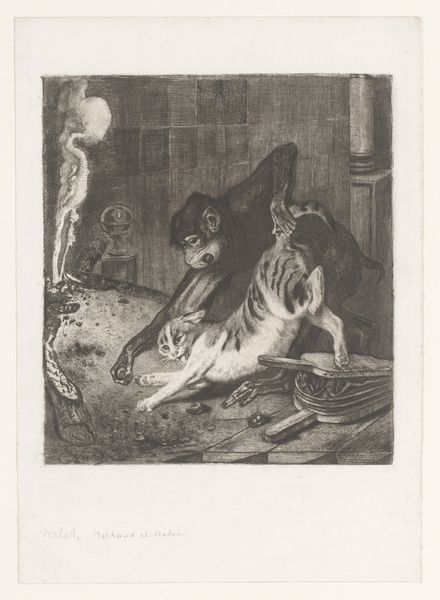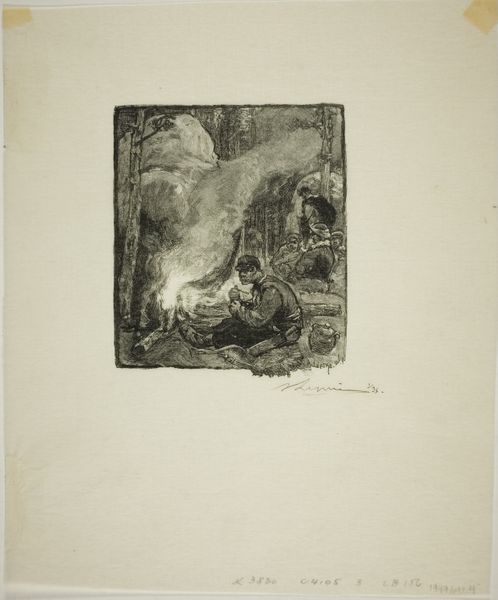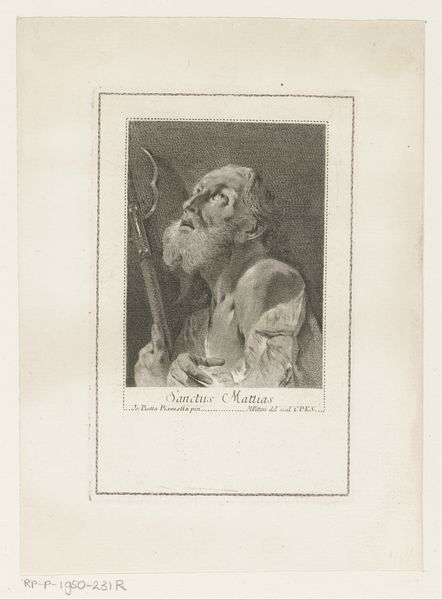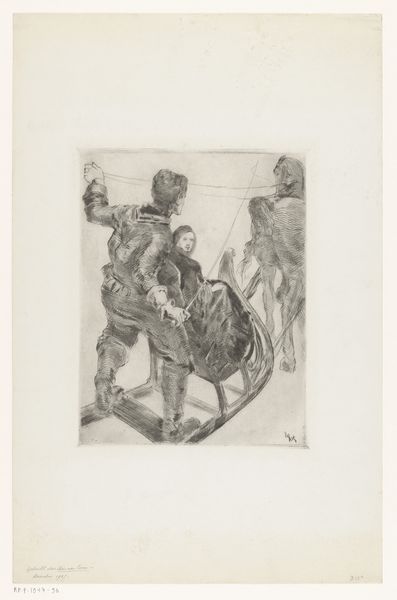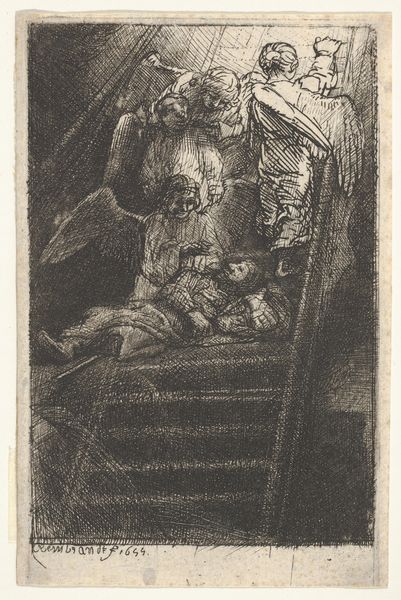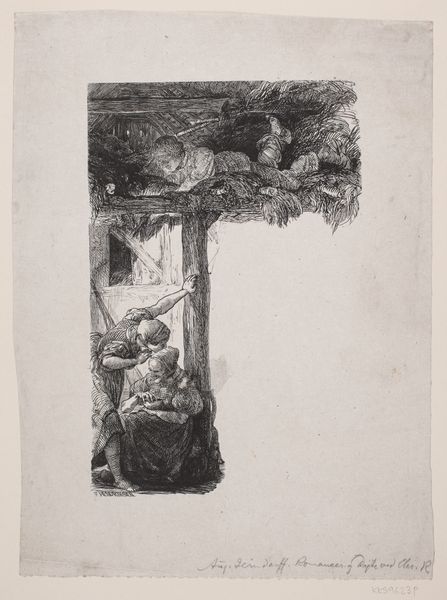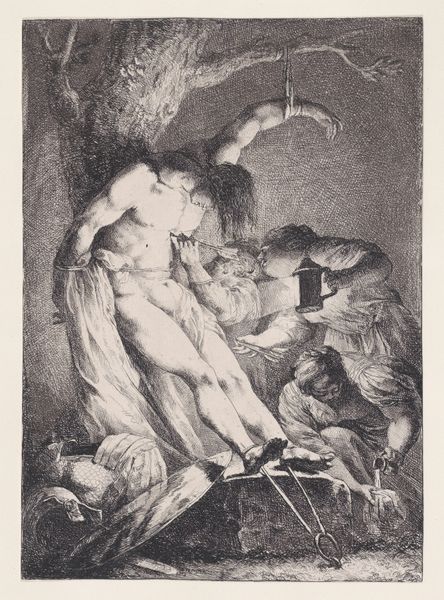
drawing, print, etching
#
portrait
#
drawing
#
animal
# print
#
etching
#
figuration
#
realism
Dimensions: 176 mm (height) x 130 None (width) (billedmaal)
Curator: So striking how this etching by F. Hendriksen captures this strange grouping of creatures. Known as "En Hund og to Papegøjer," it roughly translates to "A Dog and Two Parrots" created between 1871 and 1872. What's your first impression? Editor: Intriguing composition! Immediately, I notice the dog appears almost melancholy perched on what looks like an ornate chair with these aloof parrots flanking it. The textural differences – the dog's fur versus the parrots’ smooth feathers—are really compelling considering it’s a print. Curator: Absolutely. Hendriksen uses the medium of etching, with its detailed line work, to really draw attention to this display of pets. I find myself wondering about the social commentary—the way pets become these status symbols within the bourgeois interior, particularly in that era. The way the animals mirror human class divisions of that time. Editor: The craft element is key here, too. The labor-intensive etching process itself transforms the image into a collectible object for consumption, highlighting the commodification inherent even in portraying domestic animals. Curator: I think it’s significant, too, to see how figuration takes center stage here—realism to a certain extent—it presents these animals not as majestic beasts but as domesticated members of the household in a changing society. The power dynamics there is interesting as pets became both companions and possessions. Editor: Right. And consider how the artist might be using this image to explore the boundaries between “high” art and craft—etching often straddled that line. It wasn’t just about the subject matter but also the way it democratized image production for broader consumption. How these pieces became smaller reproducible art in a material form, rather than large, oil paintings affordable for a limited amount of consumers. Curator: Ultimately, what stands out for me is how the piece captures a very specific moment of the nineteenth century where notions of identity and status began intertwining with pets and domestic life. It provokes questions around ownership and representation. Editor: Agreed, seeing it as a product and producer makes the narrative of commodification clear to me, while at the same time thinking about the image as one that carries this social burden to portray pets and therefore owners as a subject opens an intriguing intersection between class, craft, and commerce.
Comments
No comments
Be the first to comment and join the conversation on the ultimate creative platform.
